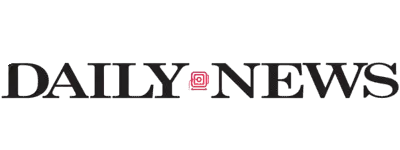A traumatic brain injury (“TBI”) can be a life-altering injury for their victims. Sadly, victims of a TBI are at an increased risk of suffering long-term physical, emotional, and cognitive consequences due to their injury. Lawsuits alleging TBIs are the intersection of medicine and law because so much of what must be proved under the law can only be done using expert medical testimony from neurologists and neuropsychologists. Scientific evidence is also going to be necessary in the form of expert testimony from a biomechanical engineer. The medical complexity of TBIs requires an attorney who understands both the law and the science underpinning TBI.
The Medical Complexities of TBIs
Medical providers consider several different angles when analyzing TBIs. One such characteristic is the mechanism of the injury or the nature, direction, and effects of the force that caused the TBI. Generally speaking, the mechanism can be either a blunt mechanism or a penetrating mechanism. Penetrating mechanisms are typically limited to gunshots, whereas a blunt mechanism can be anything from an automotive crash to a sports injury.
TBIs are commonly classified by their severity. The most common severity classification are in terms spectrum of mild, moderate, or severe TBIs. This does not mean a “mild” TBI is not significant and referring to any TBI is very likely a misnomer. Categorizing a TBI as “mild” describes only the neurological severity of the injury but there may be no correlation with the degree of short or long-term impairment or the functional disability of the victim1.
Medical professionals face significant challenges in diagnosing TBIs. Much of medical practice is concerned with physical injuries and many medical providers simply don’t understand mild TBIs. To make their job more difficult, many people suffer brain injuries but do not present the neurological effects expected of a person with a TBI. This leads to an underdiagnosis of TBI victims even among doctors who are trained to diagnose and treat them2.
TBIs can cause long-term physical, emotional, and cognitive deficits in their victims, many of which will not be fully understood by the victim until years after they suffer the TBI. Physically, TBI victims may suffer from seizures, blindness, loss of smell or taste, fatigue, and many other physical deficits. TBI victims also suffer emotional effects such as anxiety, depression, impulsive behavior, and mood swings. The cognitive effects of TBI are equally terrifying, causing them to suffer from memory loss, attention deficits, and spatial disorientation, among other possible effects3.
Legal Challenges Specific to TBI Cases
Attorneys representing TBI clients face many challenges. First and foremost, they must prove that the defendant’s conduct caused the TBI and that the TBI causes their client’s disabilities. Largely, this requires them to show an insurer or—if the case proceeds to trial—a jury what their client was like prior to the TBI and what they are like after sustaining the TBI. This can prove a difficult picture when the client’s own narrative of the story is often not entirely accurate4.
TBI victims can be entitled to extensive damages in their cases but there are significant hurdles they must overcome to get them. TBI victims are generally entitled to the damages that are the natural and direct consequences of the defendant’s actions but they cannot recover the damages that are remote or unforeseeable. Defendants are liable only for damages that are reasonably certain to exist; TBI victims do not have to prove the precise amount of these damages so long as they prove their existence. Certainty of damages can be a major issue in TBI cases5.
It’s crucial to act quickly after a TBI. There are specific deadlines for filing a lawsuit related to a traumatic brain injury. These deadlines vary depending on the circumstances of each case. Given the complexities of TBI cases, it’s essential to consult with an attorney as soon as possible to understand your options and protect your rights.6.
The Role of Medical Evidence in TBI Litigation
Medical evidence plays a pivotal role in painting the picture of the TBI victim’s life both before and after the TBI as previously discussed. The TBI victim will need a neurologist’s testimony to explain the mechanism of the TBI, the results of a clinical examination, the insignificance of negative diagnostic testing results, and to substantiate the credibility of the treating neuropsychologist. Though it sounds redundant, a neuropsychologist is a different medical professional that the TBI victim will need to explain the deficits in his or her brain function caused by the TBI. Neuropsychologists are the only specialists who are able to objectively document the victim’s injuries7.
Presenting medical evidence comes with numerous challenges. In terms of litigation logistics, defense attorneys are often given an unlimited budget and go to great lengths to hire expert witnesses and travel to take their depositions. Legally, the admissibility of a neuropsychologist’s testimony concerning the existence of a brain injury may not be fully admissible in every jurisdiction. It is therefore critical that an attorney research his jurisdiction’s legal landscape concerning the neuropsychologist testimony prior to embarking on these cases8.
Emerging Trends and Technologies
The science surrounding TBI diagnosis and treatment is progressing, and with it the legal landscape. For example, Stanley B. Prusiner, M.D., and the Director of the Institute for Neurodegenerative Diseases and Professor of Neurology at the University of California, discovered that clinical symptoms of dementia can appear decades after a person sustains a TBI. Understanding that the symptoms of a TBI may not be known or set in for decades raises expansive new questions concerning the compensability of particular aspects of a TBI9.
Beyond these extraordinary new medical discoveries, new technologies are coming into existence that will alter how TBI cases are presented to a jury. For example, neuroimaging and biomarker studies may someday come to the point where they can demonstrate the potential for resilience. In layman’s terms, this means that the potential for resilience would support TBI victims’ legal arguments concerning the need for aggressive and extensive treatment for those who this technology can show to be more capable of a functional recovery. Showing that aggressive, extensive treatment could help a TBI victim meaningfully recover from a horrific injury could increase damage awards and settlements by enormous figures10.
Navigating TBI Cases: Advice for Victims & Families
After sustaining a TBI, the primary concern for a victim and their family should be healing from the injury to the extent possible and then reestablishing a routine in their family life. Once this is done, anyone seeking to bring a claim for a TBI should immediately begin gathering the TBI victim’s medical records from the past leading up to the present. Beyond these records, the victims and their family should try to document any symptoms of the TBI that they are experiencing or dealing with to further inform a prospective attorney of the challenges they are handling11.
If a victim or his family wants to seek legal representation, then it is important to hire an attorney with knowledge of TBIs and significant experience litigating TBI cases. The ins and outs of these cases can create a myriad of challenges for inexperienced attorneys. An experienced TBI attorney will have a better understanding of how to conduct an initial interview, evaluate a case, gather records, investigate cases, gather experts, and defense attorney tactics in these litigations12.
Victims and their families should be prepared for the long-term nature of a TBI case. TBI cases often go on for years and a defendant may make an initial settlement offer at an early stage of the case. This offer should be rejected because the case is likely to increase in value over its lifecycle. It may be tempting to accept a smaller sum of money in the early stages of a case, but this can lead to poor outcomes for victims and families in the long-term because of the enormous expense of taking care of a TBI victim. To that end, families should be counseled that the litigation is going to be emotionally stressful and will not come to a quick resolution13.
The Attorney’s Role in TBI Cases
TBI attorneys generally play a few different roles, the prominence of which will change as the case progresses. The attorney’s first job, which starts in the initial client interview, is to investigate the case. This means acting quickly to acquire all of the TBI victim’s past medical records leading up to the present and they may also wish to acquire their academic and employment records too14.
Another part of that investigation will be finding the appropriate medical experts. As discussed above, this will likely include a neurologist and a neuropsychologist, but there are other medical experts that may be needed in these cases. Each TBI case is different and generalizations about the necessity of experts (other than the neurologist and neuropsychologist) will not serve practitioners in this context15.
Attorneys are referred to as “counselor” for a reason. A huge part of their job is to educate their clients on the complexities of their cases. In a lawsuit, the client decides what the goal is, but the lawyer decides how they will achieve those goals. Throughout that process, the lawyer will have to keep the client updated on what is happening in their case. Sometimes this will require difficult conversations requiring a high degree of honesty, integrity, and sensitivity to the client’s emotional state. Effective client counseling will help a client make the best choice for themselves but a client who trusts his attorney will trust that lawyer to make the best choice for the case, ultimately maximizing a potential settlement or jury verdict16.
The attorney also has an outward-facing role towards defense counsel, the insurance company, and the jury. From first contact with the insurance company and defense counsel, it is the attorney’s job to convince them of the validity of the case using the best evidence their investigation produces. Oftentimes, the insurer and its attorney will tell the TBI victim’s attorney no but the dogged pursuit of a good result for the client will produce results17.
Occasionally, there will be a difference between what the attorney represents to the insurance company and what he counsels his client. This dichotomy reflects the roles of counselor and advocate. Publicly, the attorney’s job is to be his client’s advocate in the matter and sometimes this requires an expression of confidence in the case even if there is a legal weakness with the case. Meanwhile, that same attorney will counsel his client of the legal weakness to help the client make the best decision for the TBI victim and their family18.
Conclusion
TBI cases present a unique challenge of proving causation—causation of the TBI and that the TBI is what caused the client’s current maladies. Proving causation will require extensive expert testimony from medical experts such as neurologists and neuropsychologists and it may be necessary to employ a biomechanical engineer to demonstrate the force produced on the body by the injury-causing event19.
Successful integration of the lawyer’s legal expertise with the medical expertise of the neurologists and neuropsychologists is crucial for clients to receive all of the compensation to which they are entitled. This integration can take a significant period of time and will not produce a settlement instantly and victims and their families need to be counseled of this fact at the outset of the lawsuit. Even though the lawsuit will take time to progress, an experienced TBI attorney or personal injury attorney will help progress the case. Success in these cases will often mean a settlement that sets the victim and their family up with an appropriate lifecare plan for necessary future medical expenses and services and compensation for that which was taken from the TBI victim. If you or a loved one are the victim of a TBI, please reach out to an experienced TBI attorney to evaluate your case20.
From car accidents to construction accidents and cases of wrongful death, our dedicated personal injury attorneys are here to provide expert representation.
Additional Resources
Hyperlinked below are several organizations that people suffering from brain injuries or their families may contact if they are in need of information or resources:
- ADEO: ADEO provides housing and wellness resources to people suffering from brain injuries.
- The Dan Lewis Foundation: The Dan Lewis Foundation for Brain Regeneration Research is an organization supporting the creation of new pharmacologic treatments promoting neural cell regeneration, renewed synaptic plasticity, and axonal regrowth to improve the lives of people suffering from moderate and severe TBIs and their families.
- Dansker & Aspromonte: The attorneys at Dansker & Aspromonte have years of experience handling TBI cases. Click here to see their page on traumatic brain injuries. Alternatively, you can call them at (516) 206-6723 to schedule a free initial consultation with one of their attorneys.
Footnotes
- Air and Liquid Systems Corp. v. DeVries, 586 U.S. 446, 452, 139 S.Ct. 986, 993 (2019); Restatement (Third) of Torts: Phys. & Emot. Harm § 7(a) (2010) (“An actor ordinarily has a duty to exercise reasonable care when the actor’s conduct creates a risk of physical harm.”).
- Vega v. Crane, 162 A.D.3d 167, 170, 75 N.Y.S.3d 760, 763 (4th Dep’t 2018); Woolley v. Coppola, 179 A.D. 991, 992, 578 N.Y.S.2d 729, 730 (3d Dep’t 1992).
- Vega, 162 A.D.3d at 170, 75 N.Y.S.3d at 763-64.
- Pacio v. Franklin Hosp., 63 A.D.3d 1130, 1131, 882 N.Y.S.2d 247 (2d Dep’t 2009). See also Weiner v. Lenox Hill Hosp., 88 N.Y.2d 784, 787, 650 N.Y.S.2d 629, (1996) (“The distinction between medical malpractice and negligence is a subtle one for medical malpractice is but a species of negligence. No rigid analytical line separates negligence and malpractice.”).
- Goldberg v. Horowitz, 73 A.D.3d 691, 693, 901 N.Y.S.2d 95 (2d Dep’t 2010).
- McMains, Vanessa. “Johns Hopkins Study Suggests Medical Errors Are Third-Leading Cause of Death in U.S.” HUB, May 3, 2016. Link
- Cockayne v. Bristol Hospital, Inc., 210 Conn.App. 450, 454-55, 270 A.3d 713, 720-21 (Conn. App. Ct. 2022).
- Rucigay v. Wyckoff Heights Medical Center, 194 A.D.3d 865, 866, 149 N.Y.S.3d 148, 151 (2d Dep’t 2021).
- Cygan v. Kaleida Health, 51 A.D.3d 1373, 1374, 857 N.Y.S.2d 869 (4th Dep’t 2008).
- Heraud v. Wiessman, 276 A.D.2d 376, 714 N.Y.S.2d 384 (1st Dep’t 2002).
- Nestorowich v. Ricotta, 97 N.Y.2d 393, 740 N.Y.S.2d 668 (2002).
- Friedmann v. New York Hospital-Cornell Medical Center, 65 A.D.3d 850, 884 N.Y.S.2d 733 (1st Dep’t 2009) (Catterson, J. dissenting) (“It is equally possible to surmise from the plethora of seemingly arbitrary and inconsistent determinations that courts have sometimes used the lack of a bright line rule in order to grant a plaintiff his/her day in court rather than dismiss on the grounds of an untimely pleading, or as in this case, the absence of a doctor’s affidavit.”).
- Smith v. Pasquarella, 201 A.D.2d 782, 607 N.Y.S.2d 489 (3d Dep’t 1994).
- Stanley v. Lebetkin, 123 A.D.2d 854, 507 N.Y.S.2d 468 (2d Dep’t 1986).
- McAlwee v. Westchester Health Associates, PLLC, 163 A.D.3d 549, 550, 80 N.Y.S.3d 401, 403 (2d Dep’t 2018).
- Id. at 550-51, 80 N.Y.S.3d at 403.
- Borawski v. Huang, 34 A.D.3d 409, 410, 824 N.Y.S.2d 362 (2d Dep’t 2006).
- Id. See Speciale v. Achari, 29 A.D.3d 674, 815 N.Y.S.2d 157 (2d Dep’t 2006).
- See Galioto v. Lakeside Hosp., 123 A.D.2d 421, 422, 506 N.Y.S.2d 725 (2d Dep’t 1986).
- McDougald v. Garber, 73 N.Y.2d 246, 538 N.Y.S.2d 937 (1989).
- Id.; Acevedo by Rodrigeuz v. New York City Health & Hospitals Corp., 251 A.D.2d 21, 673 N.Y.S.2d 656 (1st Dep’t 1998).
- CPLR § 3013; Fassnacht v. Hartman, 67 A.D.2d 676, 412 N.Y.S.2d 179 (2d Dep’t 1979) (holding that the complaint failed to meet the minimum pleading requirements of CPLR 3013 because it did not reference times, types of treatment that constituted the medical malpractice or negligence, and failed to state and number separate causes of action).
- See Lebetkin, 123 A.D.2d 854, 507 N.Y.S.2d 468.
- CPLR § 3121; Hoenig v. Westphal, 52 N.Y.2d 605, 422 N.E.2d 491 (1981).
- Id.
- CPLR § 3212.
- Brill v. City of New York, 2 N.Y.3d 648 (2004).
- Maliqi v. 17 East 89th Street Tenants, Inc., 880 N.Y.S.2d 917, 921 (Sup. Ct. 2009).
- See Lara v. New York City Health and Hospitals Corp., 305 A.D.2d 106, 757 N.Y.S.2d 740, 741 (1st Dep’t 2003).
- Id.
- CPLR § 4113.
- Vito v. North Med. Family Physicians, P.C., 16 A.D.3d 1039, 1040, 791 N.Y.S.2d 797 (4th Dep’t 2005).
- Weinstein v. Daman, 132 A.D.2d 547, 549-50, 517 N.Y.S.2d 278 (2d Dep’t 1987).
- Bell v. Agarwal, 55 A.D.3d 1310, 1311, 864 N.Y.S.2d 590 (4th Dep’t 2008).






